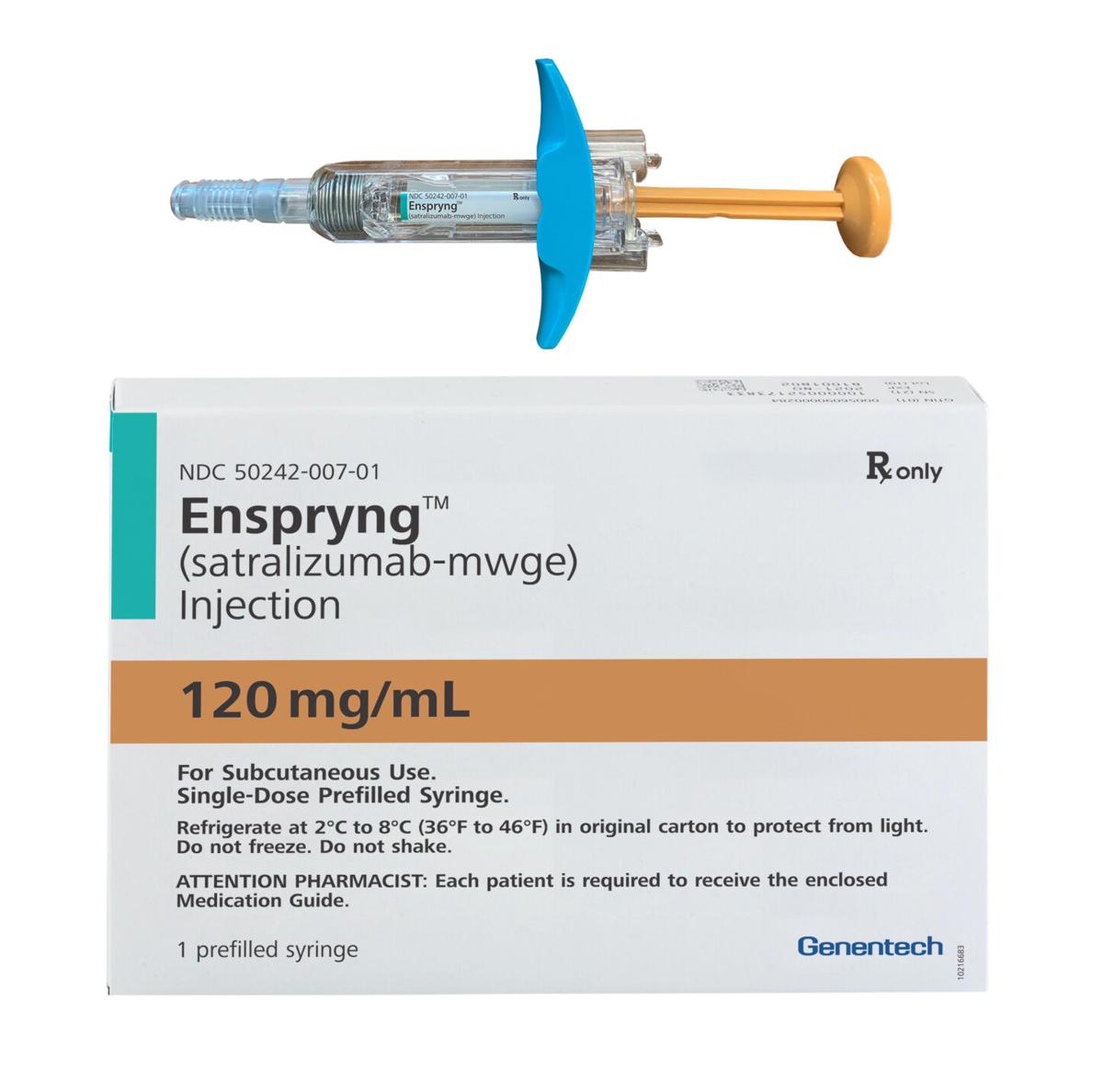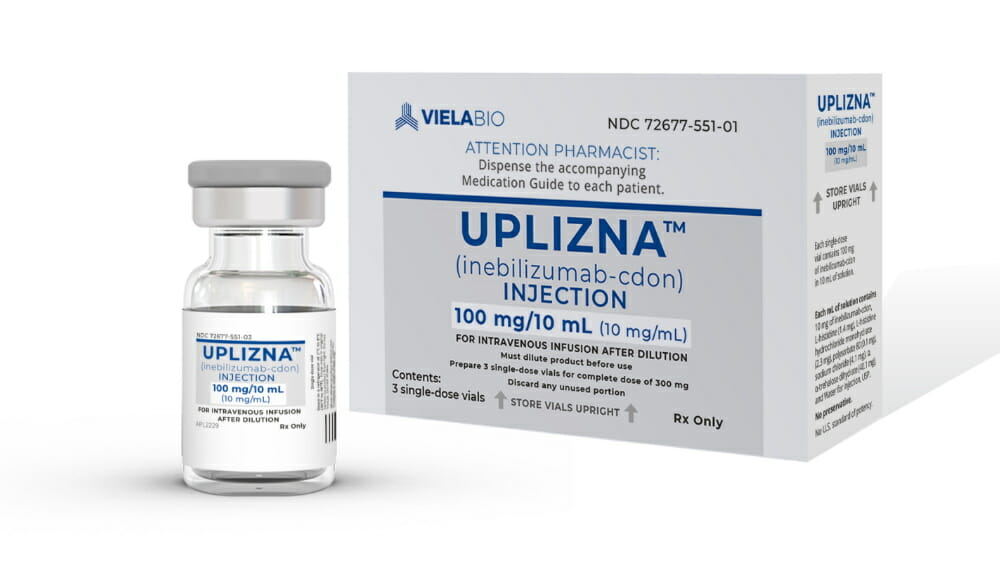Enspryng (satralizumab) vs Uplizna (inebilizumab-cdon)
Enspryng (satralizumab) vs Uplizna (inebilizumab-cdon)
Enspryng (satralizumab) and Uplizna (inebilizumab-cdon) are both monoclonal antibodies used for the treatment of neuromyelitis optica spectrum disorder (NMOSD) in adults who are seropositive for aquaporin-4 (AQP4) antibodies. Enspryng, which is an interleukin-6 (IL-6) receptor antagonist, is administered subcutaneously every four weeks after an initial loading phase, offering the convenience of at-home administration. Uplizna, an anti-CD19 B cell depleter, is given as an intravenous infusion, with the first two doses administered two weeks apart and subsequent doses every six months, which may be preferable for those seeking less frequent dosing but requires administration in a clinical setting. When deciding between these medications, patients should consider factors such as dosing frequency, mode of administration, potential side effects, and how the medication's mechanism of action aligns with their specific medical profile, in consultation with their healthcare provider.
Difference between Enspryng and Uplizna
| Metric | Enspryng (satralizumab) | Uplizna (inebilizumab-cdon) |
|---|---|---|
| Generic name | Satralizumab | Inebilizumab-cdon |
| Indications | Neuromyelitis Optica Spectrum Disorder (NMOSD) | Neuromyelitis Optica Spectrum Disorder (NMOSD) |
| Mechanism of action | IL-6 receptor antagonist | CD19-directed cytolytic antibody |
| Brand names | Enspryng | Uplizna |
| Administrative route | Subcutaneous injection | Intravenous infusion |
| Side effects | Upper respiratory tract infection, headache, gastritis, rash, joint pain | Infusion reactions, urinary tract infection, joint pain, headache, back pain |
| Contraindications | None known specifically; caution in patients with hepatic impairment or neutropenia | None known specifically; caution in patients with active hepatitis B or tuberculosis |
| Drug class | Monoclonal antibody | Monoclonal antibody |
| Manufacturer | Genentech (Roche) | Horizon Therapeutics |
Efficacy
Enspryng (Satralizumab) for Neuromyelitis Optica Spectrum Disorder
Enspryng (satralizumab) is a monoclonal antibody that has been approved for the treatment of neuromyelitis optica spectrum disorder (NMOSD) in adults who are aquaporin-4 (AQP4) antibody positive. NMOSD is a rare, lifelong and debilitating autoimmune disease of the central nervous system that primarily affects the optic nerves and spinal cord. The efficacy of Enspryng in treating NMOSD was demonstrated in two pivotal phase III clinical trials, the SAkuraStar and SAkuraSky studies. These studies showed that treatment with Enspryng significantly reduced the risk of NMOSD relapse compared to placebo. Specifically, the SAkuraSky study reported a 62% reduction in the risk of relapse for patients treated with Enspryng in combination with baseline immunosuppressant therapy.
Uplizna (Inebilizumab-cdon) for Neuromyelitis Optica Spectrum Disorder
Uplizna (inebilizumab-cdon) is another monoclonal antibody approved for the treatment of NMOSD in adults who are AQP4 antibody positive. Uplizna works by depleting a specific population of B cells that are believed to be involved in the pathophysiology of NMOSD. The efficacy of Uplizna was established in the N-MOmentum clinical trial, which was a randomized, double-blind, placebo-controlled study. The trial found that treatment with Uplizna led to a significant reduction in the risk of NMOSD attack. In the trial, 87% of patients treated with Uplizna remained relapse-free at 6 months compared to 58% of patients on placebo, demonstrating a strong therapeutic effect.
Comparative Efficacy in NMOSD
When comparing the efficacy of Enspryng and Uplizna, it is important to consider the differences in their clinical trials and mechanisms of action. Both medications have shown significant efficacy in reducing the risk of relapse in NMOSD patients who are AQP4 antibody positive. However, direct comparisons between the two drugs are not available from clinical trials, and such comparisons would require head-to-head studies. Both treatments represent important advances in the management of NMOSD, offering additional options for patients with this rare condition.
Conclusion
Both Enspryng and Uplizna have been proven to be effective in reducing the risk of relapse in patients with AQP4 antibody-positive NMOSD. Their approval provides new hope for better disease management and improved quality of life for patients suffering from this rare and serious autoimmune disorder. As with all medications, the choice of therapy should be individualized based on patient characteristics, treatment history, and the presence of AQP4 antibodies. Healthcare providers should consider the efficacy, safety profile, and administration routes when deciding between Enspryng and Uplizna for their patients with NMOSD.
Regulatory Agency Approvals
Enspryng
-
European Medical Agency (EMA), European Union

-
Food and Drug Administration (FDA), USA

-
Health Canada

-
Pharmaceuticals and Medical Devices Agency (PMDA), Japan

-
Swissmedic (CH)

Uplizna
-
Food and Drug Administration (FDA), USA

Access Enspryng or Uplizna today
If Enspryng or Uplizna are not approved or available in your country (e.g. due to supply issues), you can access them via Everyone.org.
How it works

Make an enquiry
Choose the medicine you want to buy, answer a couple of questions, and upload your prescription to speed things up. We’ll get back to you within 24 hours.


Make an enquiry
Choose the medicine you want to buy, answer a couple of questions, and upload your prescription to speed things up. We’ll get back to you within 24 hours.


Breeze through the paperwork
We'll guide you through the required documents for importing unapproved medicine, ensuring you have all the necessary information.


Get a personalized quote
We’ll prepare a quote for you, including medicine costs and any shipping, administrative, or import fees that may apply.


Receive your medicine
Accept the quote and we’ll handle the rest - sourcing and safely delivering your medicine.

Some text on this page has been automatically generated. Speak to your physician before you start a new treatment or medication.
Let's talk
If you have any questions, call us or send us a message through WhatsApp or email:
Contact us




